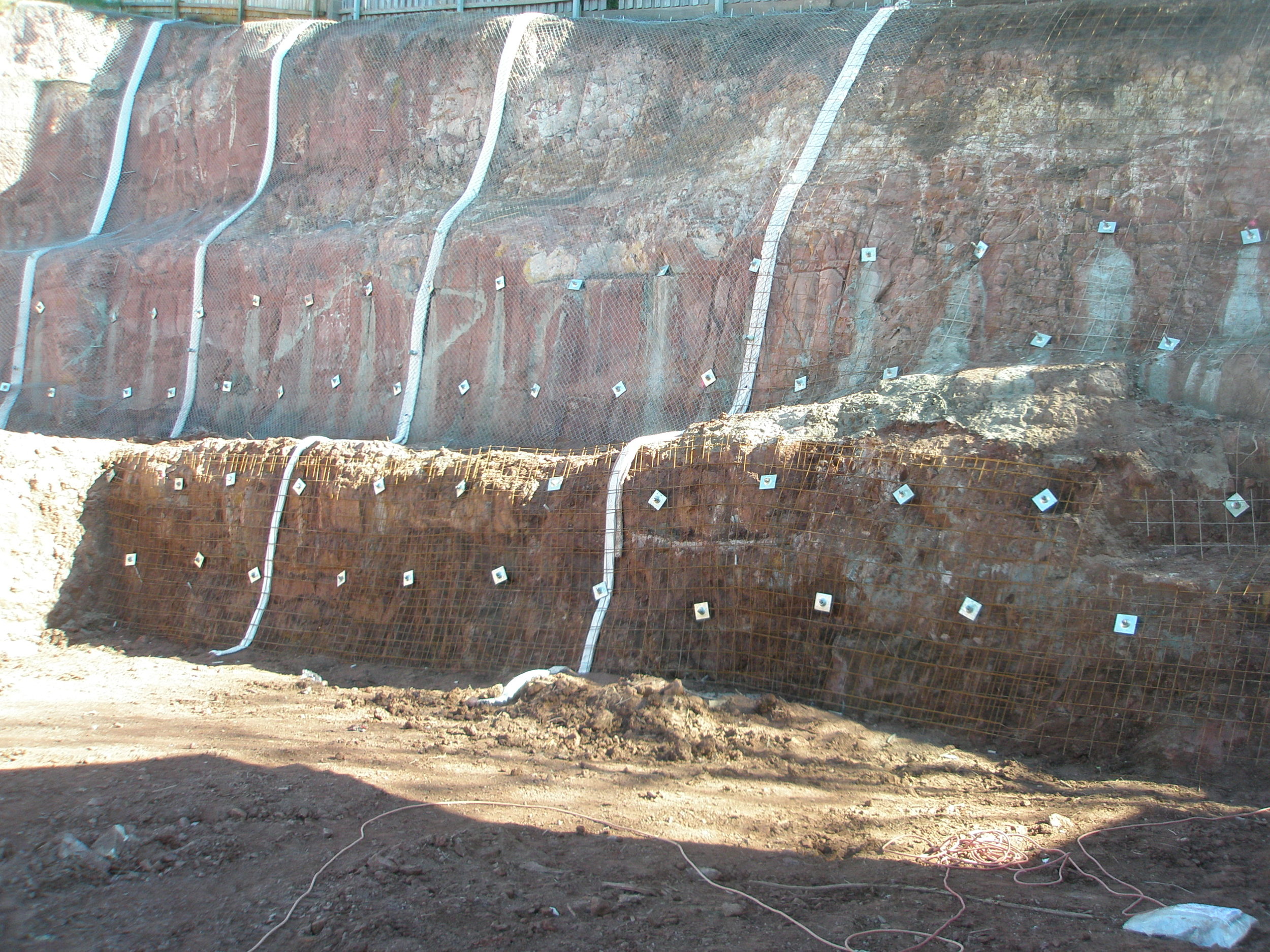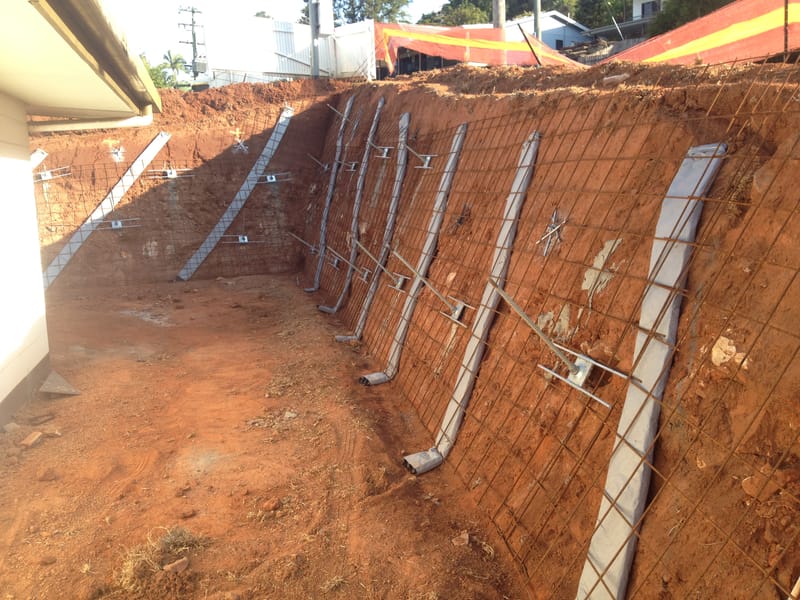Exactly How Williams Anchors Offer Stability for Large-Scale Framework Projects
Exactly How Williams Anchors Offer Stability for Large-Scale Framework Projects
Blog Article
High-Performance Rock Anchors for Challenging Atmospheres
The necessity for high-performance rock anchors in tough environments can not be overstated, specifically in the context of steep slopes and seismic zones where standard options often drop brief. These anchors, characterized by their outstanding load-bearing capacity and advanced rust resistance, play a critical function in ensuring the security of structures under damaging conditions. As we check out the cutting-edge technologies and best methods that boost their efficiency, it becomes obvious that comprehending their applications is essential for success in geotechnical design. The implications of these developments expand far beyond simple stability.
Value of Rock Anchors
The relevance of rock supports in engineering and construction can not be overstated, as they provide vital stability and support in various geological conditions. These supports are necessary for securing frameworks to the bedrock, especially in areas susceptible to landslides, seismic task, or other geological instabilities. By transferring lots from the framework to stable rock developments, rock supports aid alleviate the risk of structural failing, guaranteeing both safety and security and long life.
Furthermore, rock anchors help with the construction of tough tasks, including deep excavations, retaining walls, and bridge structures. Their ability to adapt to various soil and rock types makes them a vital property in civil design projects worldwide. The convenience of rock supports enables engineers to design solutions that resolve site-specific difficulties, optimizing both efficiency and cost-effectiveness.
Furthermore, making use of rock anchors can dramatically lower the quantity of product required for building and construction, causing even more sustainable techniques. As infrastructure demands expand in intricacy and range, the significance of rock anchors in offering reputable support group will proceed to be an essential consideration in engineering style and implementation. Their function in boosting stability makes rock supports important in the modern-day building and construction landscape.

Trick Attributes of High-Performance Anchors
High-performance anchors are defined by numerous vital functions that boost their efficiency popular applications. Among one of the most considerable qualities is their remarkable load-bearing ability, which allows them to stand up to extreme forces without compromising structural stability. This is commonly achieved through advanced products and cutting-edge style, which make sure ideal strength-to-weight proportions.
Another essential function is corrosion resistance, particularly for supports utilized in harsh settings. The use of specialized finishes or corrosion-resistant alloys substantially expands the lifespan of these supports, reducing maintenance costs and improving integrity. Additionally, high-performance supports are developed for convenience, enabling simple installment in numerous geological conditions, including fractured rock or loosened soil.
Furthermore, the flexibility to various anchoring systems, such as post-tensioning or grouted installations, showcases their design adaptability. Several high-performance supports likewise include keeping an eye on capacities, enabling real-time evaluation of anchor performance under load. Last but not least, their conformity with international requirements guarantees that they fulfill extensive safety and performance criteria, giving confidence in their application across various markets. These features collectively add to the general efficacy and integrity of high-performance rock anchors in complex and challenging atmospheres.
Applications in Challenging Atmospheres
Utilizing sophisticated design principles, high-performance rock supports are necessary in a variety of difficult environments, such as steep inclines, deep excavations, and seismic areas. These supports give critical assistance and stability in problems where typical securing techniques might stop working. In steep incline applications, they counteract the pressures of gravity and soil disintegration, avoiding landslides and guaranteeing the safety and security of facilities over.
In deep excavation tasks, high-performance rock anchors are employed to stabilize preserving wall Web Site surfaces and avoid wall surface failing, therefore assisting in safe building methods. Their ability to stand up to high tensile lots makes them ideal for these applications, where the honesty of the excavation site is vital.
In addition, in seismic areas, rock anchors are important for improving the resilience of structures versus earthquake-induced forces. By securely securing structures and framework to the bedrock, they minimize the threat of structural failure throughout seismic occasions.
These applications demonstrate the adaptability and dependability of high-performance rock supports, making them essential tools in geotechnical engineering (Williams Anchors). Their effectiveness in protecting difficult settings emphasizes the value of continued technology and application of robust anchoring services in the field

Cutting-edge Technologies in Rock Anchoring
Recent innovations in rock anchoring technology have transformed the method engineers come close to stabilization and assistance in geotechnical projects. Developments such as high-strength materials, advanced coverings, and wise monitoring systems have substantially boosted the efficiency and dependability of rock supports in challenging atmospheres.
One noteworthy advancement is the use of high-tensile steel alloys that provide remarkable strength-to-weight proportions, enabling lighter and more efficient anchor systems without compromising structural integrity. Additionally, corrosion-resistant coverings, such as epoxy or galvanized surfaces, prolong the life-span of supports in harsh problems, minimizing upkeep needs.
In addition, the assimilation of clever technology into rock anchoring systems allows real-time tracking of anchor performance. Sensing units installed within the supports can supply important information on tons modifications, displacement, and environmental problems, enabling engineers to make informed choices and react proactively to potential concerns.
In addition, innovations in installment methods, including making use of robotics and automated systems, simplify the anchoring procedure, decreasing labor expenses and improving safety and security. Collectively, these innovative modern technologies not just enhance the performance of rock supports however likewise ensure the long life and durability of geotechnical structures in tough atmospheres.
Best Practices for Installment and Upkeep
The efficiency of sophisticated rock anchoring modern technologies is mainly dependent on appropriate installation and upkeep practices. To make certain optimal efficiency, it is important to conduct thorough site analyses before installation. This consists of evaluating geological conditions, determining prospective risks, and figuring out one of the most appropriate anchoring approach.
Throughout installment, adherence to look at this website supplier requirements is important. Proper exploration strategies, such as preserving the correct angle and deepness, can significantly enhance the support's grip. Furthermore, making certain that the grout utilized for bonding is suitable with both the rock and the anchor material is essential for long-lasting security.
Post-installation, normal inspections ought to be set up to monitor for signs of distress or deterioration. This consists of monitoring for deterioration, variation, and any modifications in load-bearing capability. Williams Anchors. Applying an upkeep strategy that consists of periodic testing and re-tensioning of anchors can minimize risks related sites to ecological modifications or unpredicted load increases
Conclusion
In final thought, high-performance rock anchors play a critical role in safeguarding frameworks within difficult environments. The convenience of these supports, combined with innovative modern technologies such as clever monitoring systems, boosts their efficiency.
Report this page